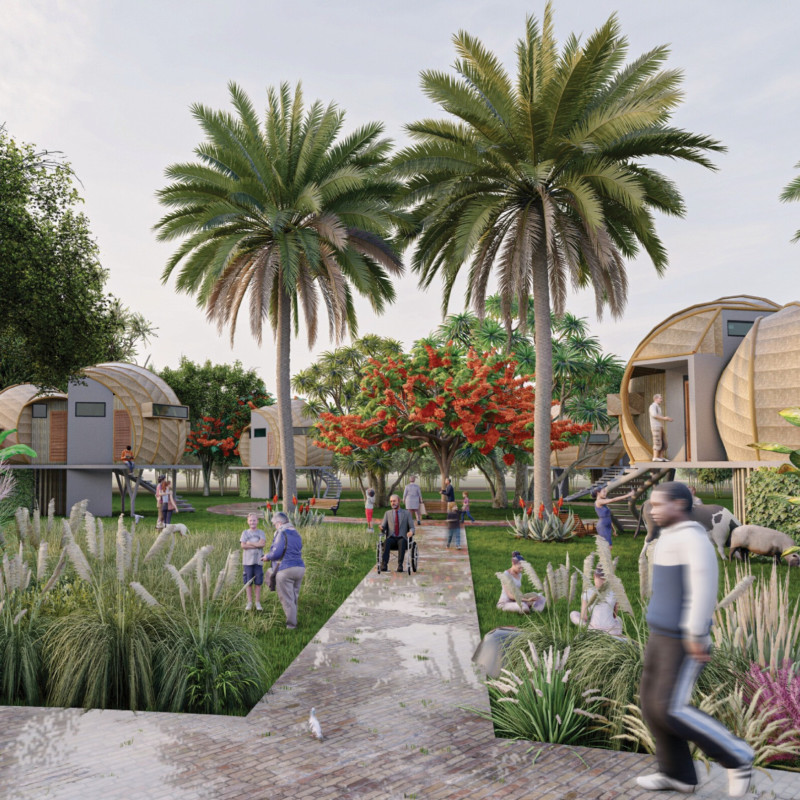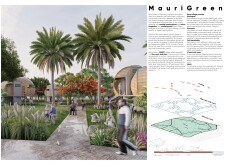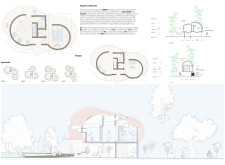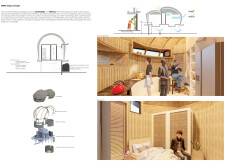5 key facts about this project
## Overview
MauriGreen is an architectural initiative located in Mauritius, aimed at addressing housing challenges through sustainable living solutions. The project integrates ecological sustainability, community interaction, and self-sufficiency to enhance residential lifestyles. Designed as a SMART village, it combines housing, workspaces, and communal areas to encourage social interaction among residents while incorporating innovative architectural strategies.
## Modular Housing Approach
The design incorporates modular and expandable housing units, allowing for customization in response to the evolving needs of families. Configurations such as 2BHK, 3BHK, and 4BHK options enable residents to adapt their living spaces, promoting a strong sense of ownership. The layout prioritizes flexibility and adaptability, ensuring homes can evolve with their inhabitants.
## Sustainable Practices and Community Integration
Sustainability is a core principle throughout the project, evident in the selection of eco-friendly materials like local timber (jambo), water reed for insulation, and bamboo for structural applications. The focus on green spaces is manifested in community gardens and dedicated zones that not only foster biodiversity but also engage residents in gardening and farming activities. Additionally, the project's innovative water management systems include rainwater harvesting, enhancing self-sufficiency while minimizing flood risks.
The incorporation of smart technologies within residences further optimizes energy efficiency, featuring cross-ventilation for air quality, solar panels for renewable energy, and smart waste management systems. Furthermore, integrated co-working spaces support the balance between personal and professional lives, contributing to economic development and community engagement.
## Site Strategy and Community Activities
The masterplan is designed with a hierarchal structure of green spaces that facilitate access to natural environments, featuring dedicated cycling and walking paths and an accessible retention pond for recreational activities. By situating microbusiness opportunities within residential clusters, the design aims to enrich the community’s economic framework while promoting commercial activities and remote work options.






















































